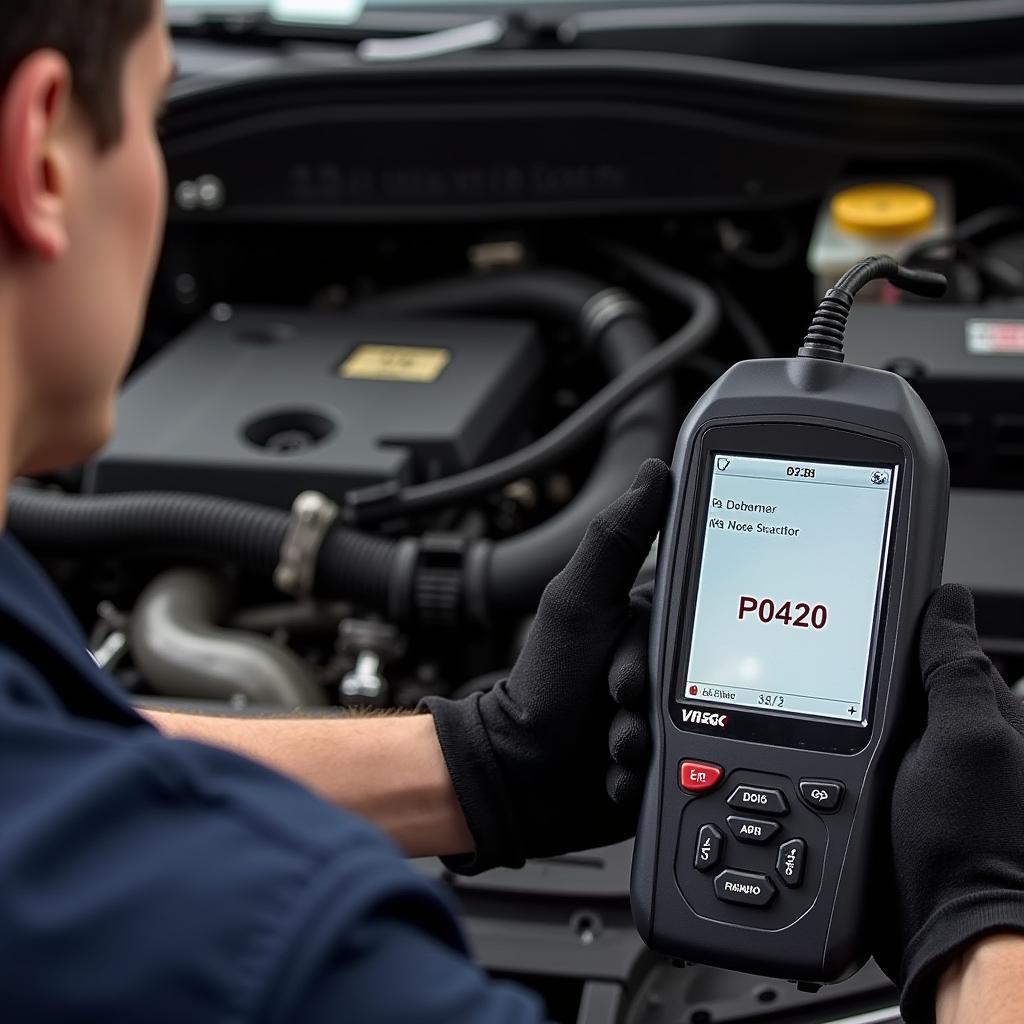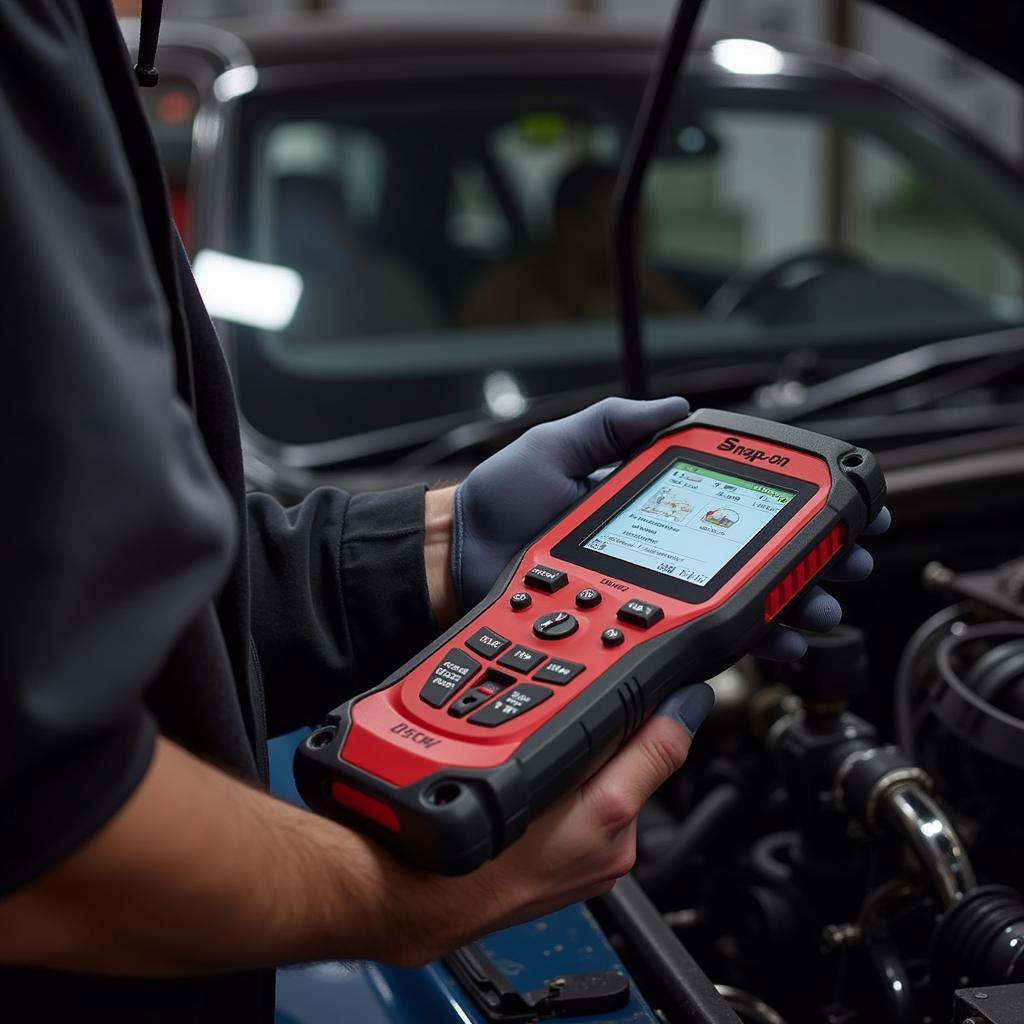Experiencing issues with your 2002 Lincoln LS? Modern vehicles rely heavily on onboard computers and a “check engine” light could indicate a range of problems. Connecting a scan tool, also known as an OBD-II scanner, is often the first step to diagnosing the issue. This guide will help you understand the process, common problems, and offer solutions when your 2002 Lincoln LS needs a scan tool hookup.
Why Use a Scan Tool on a 2002 Lincoln LS?
Your Lincoln LS has an onboard diagnostic system (OBD-II) that monitors various sensors and systems. When a problem is detected, it triggers a “check engine” light and stores a Diagnostic Trouble Code (DTC) in the car’s computer. A scan tool reads these codes, giving you valuable insights into:
- Engine Performance Issues: Misfires, fuel system problems, oxygen sensor malfunctions.
- Transmission Problems: Shifting issues, solenoid problems, torque converter faults.
- Emissions System Faults: Problems with the catalytic converter, evaporative emissions system, or oxygen sensors.
- Other System Errors: Issues with ABS, airbags, and other electronic modules.
[image-1|2002-lincoln-ls-engine-bay|2002 Lincoln LS engine bay with highlighted OBD-II port location|A detailed close-up image of the engine bay of a 2002 Lincoln LS. The image focuses on the location of the OBD-II port, highlighting it with a bright colored circle or arrow. The surrounding components, such as wires, hoses, and the engine block, should be clearly visible to provide context.]
Locating the OBD-II Port on Your Lincoln LS
The OBD-II port is a trapezoidal 16-pin connector usually located under the dashboard on the driver’s side. In most 2002 Lincoln LS models, it’s found beneath the steering column near the fuse box.
Understanding Diagnostic Trouble Codes (DTCs)
DTCs are alphanumeric codes that correspond to specific vehicle malfunctions. They follow a standardized format:
- First Character:
- P: Powertrain (engine, transmission)
- B: Body
- C: Chassis
- U: Network & Communication Systems
- Second Character:
- 0: Standardized code (SAE – Society of Automotive Engineers)
- 1: Manufacturer-specific code
- Third Character: System related to the code (e.g., 1 for Fuel and Air Metering)
- Fourth & Fifth Characters: Specific fault within that system.
For example, code P0301 indicates a misfire in cylinder 1.
Common 2002 Lincoln LS Issues and Their DTCs
Here are some common problems 2002 Lincoln LS owners face:
- Rough Idle/Misfires: Often caused by faulty spark plugs, ignition coils, or vacuum leaks. Look for codes like P0300 – P0308 (cylinder-specific misfire codes).
- Check Engine Light with Poor Fuel Economy: Could be a failing oxygen sensor, a common issue on higher mileage vehicles. Look for codes like P0171, P0174 (lean or rich fuel mixtures).
- Transmission Shifting Problems: Could signal a faulty solenoid, sensor issue, or low transmission fluid. Codes will vary but may include P0700 (general transmission fault).
- EVAP System Issues: Often caused by a loose or damaged gas cap, but could indicate a leak in the EVAP system. Look for codes like P0440, P0442, P0455.
[image-2|obd2-scanner-connected-to-2002-lincoln-ls|Mechanic connecting an OBD-II scanner to a 2002 Lincoln LS| A clear image of a mechanic’s hand connecting an OBD-II scanner to the port of a 2002 Lincoln LS. The scanner screen should be somewhat visible, ideally displaying a “reading codes” message or a sample DTC.]
What to Do After Scanning Your Lincoln LS
- Record the Codes: Write down all the DTCs displayed on the scan tool.
- Research the Codes: Use online resources or repair manuals to understand what each code means.
- Clear the Codes: After noting the codes, use the scan tool to clear them. This will help you determine if the problem is intermittent or persistent.
- Further Diagnosis: If the check engine light returns or the problem persists, you’ll likely need further diagnosis. This may involve checking sensor data, monitoring live data streams with the scan tool, or performing mechanical tests.
DIY vs. Professional Mechanic
Simple issues, like a loose gas cap, can be fixed at home. However, complex problems may require the expertise of a qualified mechanic who has the knowledge and tools for in-depth diagnosis and repair.
“Many times, people misinterpret OBD-II codes or attempt repairs without fully understanding the underlying problem. This can lead to unnecessary part replacements and further complications. If you’re unsure, it’s always best to consult a professional.” – John Smith, ASE Certified Master Technician, ScanToolUS
Still Having Trouble? Contact ScanToolUS!
If you’re in need of a reliable scan tool or expert advice, reach out to us at ScanToolUS. We offer a wide selection of professional-grade scan tools designed for both DIYers and experienced technicians.
Contact us:
- Phone: +1 (641) 206-8880
- Office: 1615 S Laramie Ave, Cicero, IL 60804, USA
We’re here to help you get your 2002 Lincoln LS back on the road and running smoothly!
Frequently Asked Questions:
- Can I drive my Lincoln LS with the check engine light on?
- It depends on the severity. If the light is flashing, it indicates a serious problem and you should stop driving immediately. If the light is solid, you may be able to drive for a short time, but it’s best to get it checked soon.
- Will disconnecting the battery reset the check engine light?
- Yes, temporarily. However, the light will return if the underlying problem is not addressed.
- Are all OBD-II scanners compatible with my Lincoln LS?
- Most standard OBD-II scanners will read engine codes. However, for access to other modules (ABS, airbags, etc.), you might need a more advanced scan tool.
- Can I use a code reader app on my phone?
- Yes, but you’ll need a Bluetooth OBD-II adapter that plugs into your vehicle’s diagnostic port.
- How often should I scan my car for codes?
- It’s good practice to scan your car for codes periodically, even if there are no warning lights illuminated. This can help catch potential issues early on.



Pingback: Understanding "Inc" on Your Scan Tool: A Comprehensive Guide - Car Scan Tool